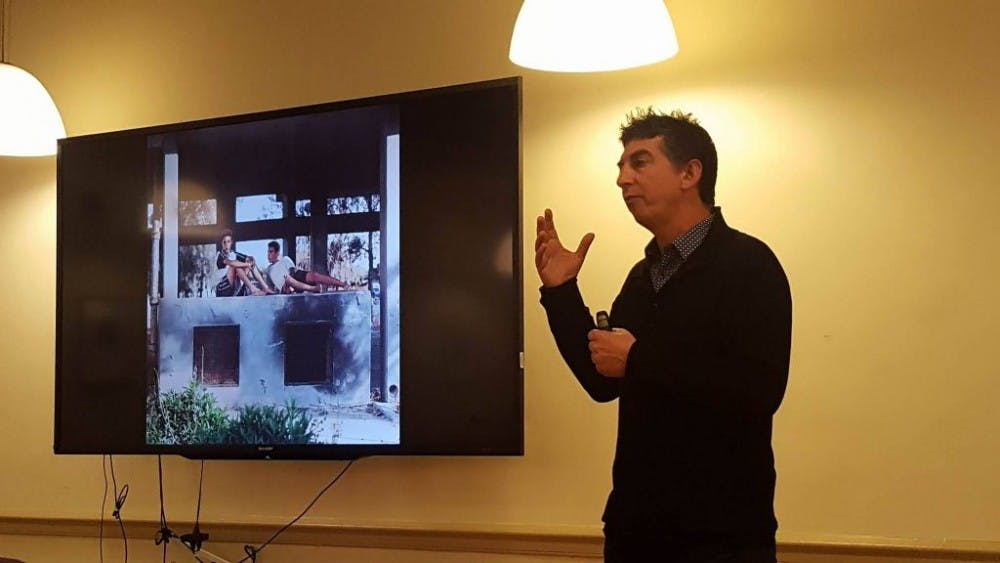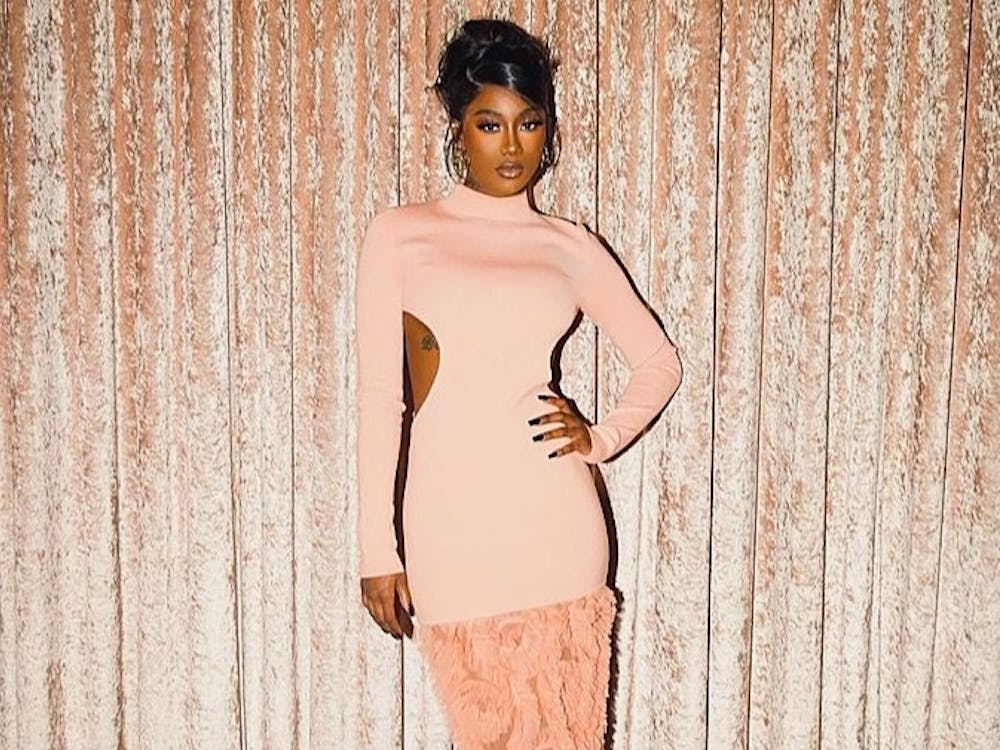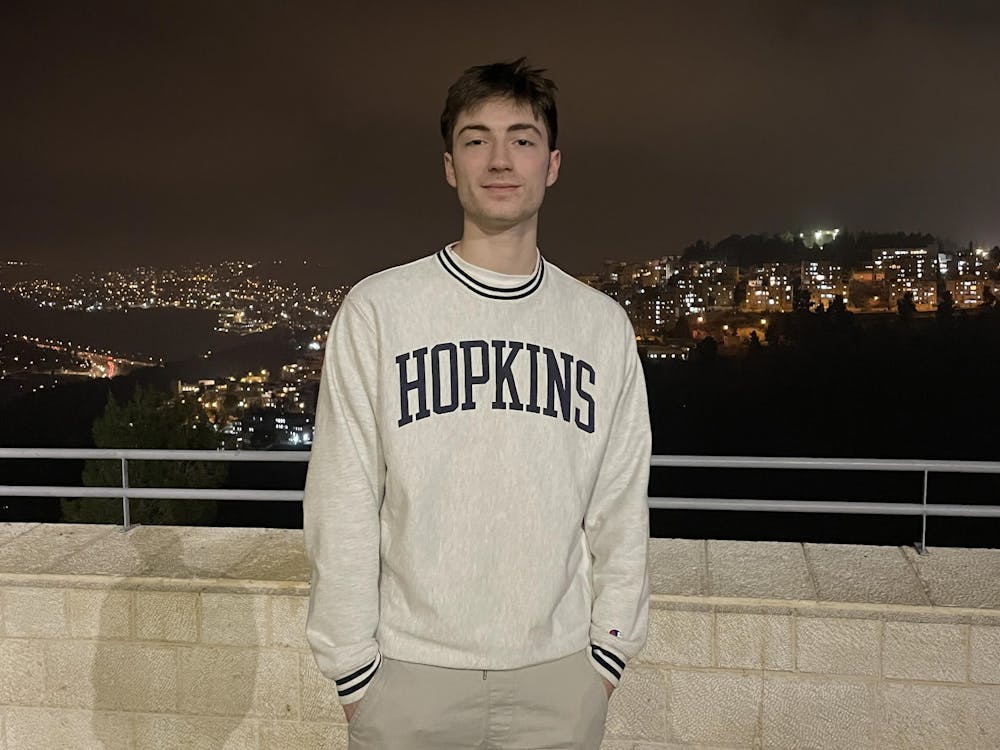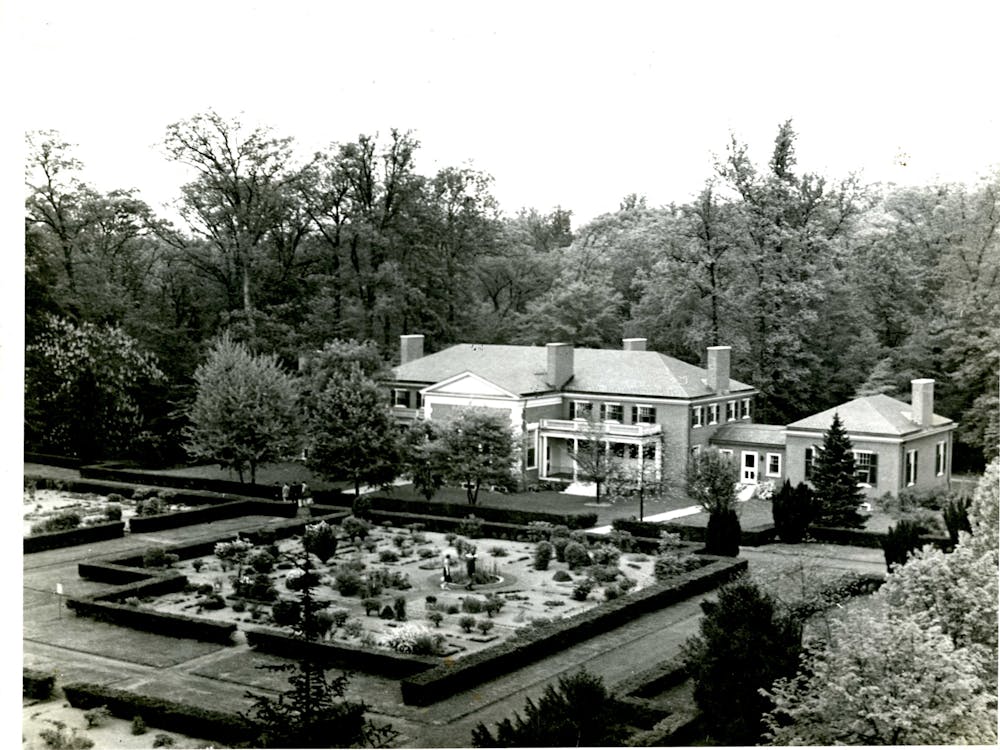Photographer Adi Nes spoke about developing identity through photography on Wednesday evening in Levering Hall. The event, hosted by the Coalition of Hopkins Activists for Israel (CHAI), provided a chance for students to learn about Israel through photography.
Nes is an art photographer, which he explained to mean that his photos are staged and are not representations of real life events.
“I’m kind of a one-person production house because I am the scriptwriter, the driver, the make up artist and light technician,” he said. “I do most of the roles, and more and more people join in the process.”
Nes was born in a small developing town in the south of Israel. The town drew immigrants from all over the world, including Nes’ own parents who emigrated from Iran. After serving for three years as an air-traffic controller, he decided to study photography at the Bezalel Academy of Arts and Design in Jerusalem.
Nes takes his photographs in traditional printed film. Since he knows he cannot edit his photographs later with Photoshop, he is determined to achieve perfection during the set. Nes’ work is unique for its focus on different themes of identity.
“The main theme in my art is identity. I started to make art from the point of who I am,” Nes said. “I’m an Israeli, and I deal with masculinity in Israeliness in my art. It is why I take pictures of men.”
Nes plans each of his series with an idea of how each specific image will be presented in a gallery exhibition. His series take many years to complete.
“The first series that I did was the soldier series,” Nes said. “It was a series of 22 images that took me six years to complete between 1994 to 2000.”
As Israel struggles in a time of conflict, Nes believed that soldiers were an important theme of identity for his country.
“The war in Lebanon started when I was a teen. After 18 years, I felt that we had forgotten the soldiers, and I wanted to bring them back to the front stage,” he said. “In the army, soldiers are assigned numbers. This causes them to question their identity in a way.”
Nes described the behind-the-scenes of one of his photographs, which illustrated a group of soldiers on a bus. Nes had to schedule a day with the driver in advanced and used actors who were citizens recruited from newspaper ads.
“The unfortunate thing is, everyone was a soldier or is going to be a soldier, so in a way it is authentic because they came to the shooting day,” Nes said. “Every detail was carefully chosen, and every face was carefully cut, because I wanted to show the soldiers like child-like faces.”
Much of Nes’ art is inspired by Greek mythology and Biblical stories. One of his most well known pieces, “The Last Supper,” shows an Israeli army feasting on a long table, resembling “The Last Supper” painting by Leonardo Da Vinci.
The work garnered wide recognition, leading him to win awards and invitations to contemporary art museums around the world. One crucial moment of achievement was when Nes was asked by Vogue magazine to cover an issue following the 9/11 attacks.
“Because of 9/11, the verdict of Vogue was to dedicate the magazine to the local identity and to the masculine identity in the Middle East,” he said. “They asked six photographers from the Middle East, asked each to give his own translation [of] the local masculinity... in war.”
Nes experienced a personal crisis of identity himself. At one point he considered leaving Israel after he was fired from his job.
“I asked myself, why do I choose to walk and live in Israel when I can easily move to the states or to Europe?” Nes said. “But I felt that I couldn’t move and take pictures out of Israel, because I can’t take pictures of Israel from out of Israel.”
Nes remarked that he thought Israel was going through a deep identity crisis at the time and he reflected on what it meant to be an Israeli.
“People wanted to escape Israel because of the terror attacks and because of the economic situation,” he said. “I thought that if Hebrew is my identity, then what is the root of the Israeli identity? Why do we choose to grab this hard land?”
Senior Gabriela Mizrahi went to the event because she had seen some of Nes’ work before.
“Usually we think of photographs as something... natural or candid,” she said. “It was interesting to hear about the process where it is more staged and much more like a painting.”
Co-President of CHAI Daphna Varadi explained that Nes was invited to help showcase a different facet of Israeli culture.
“We wanted to bring him in to talk about an artistic side of Israel,” she said. “He really brings in Israeli culture and developing identity. All of this work highlights certain aspects that almost every Israeli can identify with.”























Please note All comments are eligible for publication in The News-Letter.